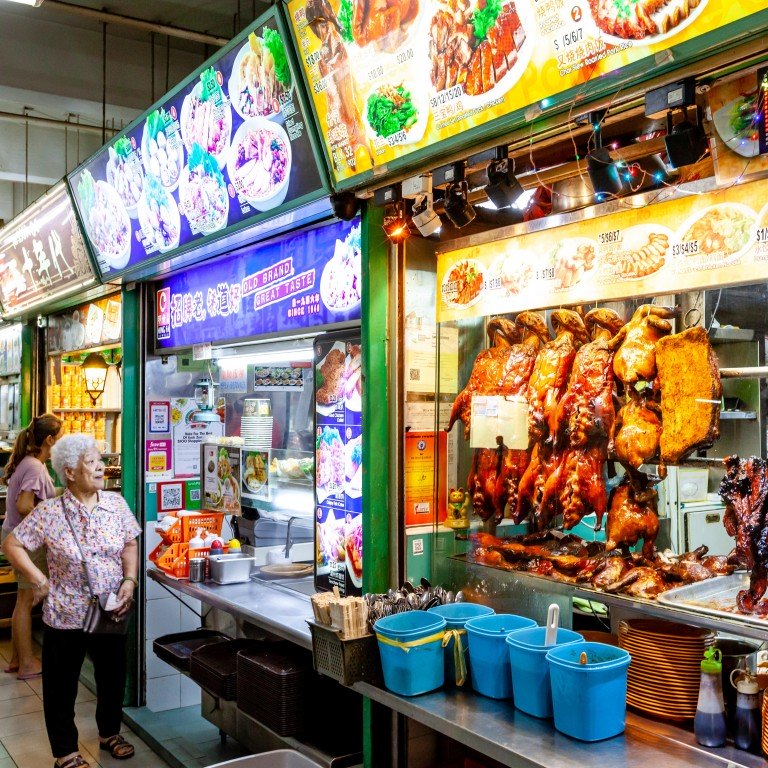Best Singapore POS System Features for Restaurant Businesses (2020)
The definitive guide to Singapore's must-have POS features

Contents
What is a POS System?
A POS (Point of sale), in its most basic form, is the location where monetary transactions are completed in both retail and restaurant businesses. However, these days, most restaurants in Singapore use a POS system to keep their businesses running. A POS system is a combination of software and hardware through which modern Singaporean businesses can function at an optimum rate.
The below components are the parts that typically make up the modern Singapore POS system:
1. A software component to run the entire operation
2. A display to indicate the amount owed/items purchased during a transaction
3. A keyboard/touch screen device (iPad) to select purchased products and input data
4. A printer for receipts
5. A cash register to dispense change and store cash
6. A barcode scanner to scan product barcodes (optional for some restaurants)

5 Key Singaporean POS System Features
There are many different types of POS systems on the market these days. Given that Singapore is a food hub where the "F&B sector is projected to grow at a 2.1% compound annual growth rate (CAGR) over the next five years," getting the right POS could certainly help restaurant businesses capitalize on this new growth potential. We'll be taking a look at 5 features every Singapore POS system should offer so that restaurants can enjoy a leg up on competitors.
1. Custom Menu Creation
2. Portability and Compactness
3. Cost Savings
4. CRM and Customer Loyalty
5. Inventory Management
Custom Menu Creation
Creating a custom menu is extremely important in a place like Singapore where the language is a fluid and dynamic mix of so many cultural influences. It's not uncommon to hear people speaking in a blend of "English, Hokkien, other Chinese dialects and Malay [while] also making references to popular culture." Why are we bringing up language? Well, quite simply, because it's very difficult to keep track of the multiple ways a customer can order something similar. Take kopi (coffee), for example. There are several variants that come with different ingredients, some modern and some traditional, and each has its own specific name. While coffee connoisseurs will be experts on this matter, ordinary staff members can easily write down the incorrect order if they are inexperienced and have to manually input each customer's order.
This is where a custom menu comes into play. You can set up combos, modifiers, product types, different languages and more. This means that instead of trying to remember the specific spelling and contents of each order, staff can just find the corresponding item on the POS (with photo for extra clarity), tap on it and input any special modifier requests the customer might have. This not only reduces the chances of making errors when taking orders, but also ensures faster turnover and better customer satisfaction as orders can be taken quicker. The same concept can be applied to hawker stalls to make the ordering process easier.

Portability and Compactness
Singapore may be famous for some of its Michelin Star restaurants, but it is also the land of cheap and cheerful hawker stalls. Currently, there are 114 government-sanctioned hawker centers in Singapore, with each being host to plenty of hawker stalls within. Running a hawker stall in Singapore is no easy feat, though. When space is at a premium, hawker stall businesses will require a reliable POS system that is also extremely compact. Enter in the iPad POS.
iPad POS systems provide the functionality of a traditional POS system, include more features and present it all in a package that fits in the palm of the user's hand. No on-site servers needed, no active internet connection required to record data. This is the durable and form-fitting solution that is ideal for Singaporean hawker stalls.

Cost-Savings
A POS system should not be a liability to your business, but should instead, be an asset. A POS that isn't versatile and useful will end up costing you more than it's worth in a market like Singapore. This is why it's important to check if the Singaporean POS system you choose is feature-packed and offers unrivalled cost savings. Here are some things that really help a POS stand out in the savings department:
1. Modules - does the POS have the ability to incorporate separate modules like Queue Ticket Kiosks, Kitchen Display Systems (KDS), Enterprise Features, Self-Order Solutions and more, all under the same system?
2. Will the POS be future-proof? If your POS cannot receive instant updates and new features online, it will likely become obsolete quickly and offer worse return on investment as time goes on.
3. Cloud-based efficiency. Can your POS system make use of cloud technology so that every aspect of your business can be run seamlessly without the need for additional staff? Also, can it offer you control of your business directly from your own devices (mobile phone, laptop, tablet, etc)?
4. Can your POS take the place of staff that perform simple and basic tasks to save you money?

CRM and Customer Loyalty
A good Singaporean restaurant will ensure that customers always feel at home when they visit. Remember, Singaporean "households spent S$1,199 on food monthly, mainly due to increased spending in restaurants, cafes and pubs." Getting a piece of this lucrative pie may seem difficult, but your POS can be the deciding tool on whether your restaurant succeeds in driving repeat business or fails at it.
In Singapore, corporate giants like McDonald's and Starbucks are all thriving on their customer relationship management (CRM) and loyalty programs. Why shouldn't smaller Singaporean businesses also get their fair share of those earnings? If your POS offers the ability to craft your own custom rewards programs, you can easily build a loyal fan base and boost your earnings.
A study done by NUS Business School with a colleague from the Chinese University of Hong Kong found that: "Through a series of experiments involving participants in Singapore and Hong Kong, we found that people are more engaged with a piecemeal rewards programme. This allows them to earn rewards gradually rather than gaining the same rewards all at once after a long-term effort."
This means that earning rewards gradually is the secret to winning customer loyalty. Your POS can easily be set up to offer points on loyalty cards for every item purchased so that rewards can be gradually earned and claimed by customers. This increases their feeling of value as a customer and encourages loyalty and further spending.

Inventory Management
It cannot be understated how important proper management of inventory is. Most restaurant entrepreneurs agree that "One of the major needs to run a successful business is proper utilisation of the resources available to the brand." Manually keeping track of inventory is a pain and can result in top-selling items being sold out when they're in demand. This is why owning a POS system that can keep track of your inventory is absolutely essential to restaurant businesses in Singapore.
Another pitfall that inventory management can prevent is having to have your wait staff fumble as they try to explain to customers that their favorite item is sold out. Not only does this lower staff morale, but it leaves a sour taste for customers who might not frequent your restaurant again. Worse still, they may leave a bad review which could discourage others from visiting.
